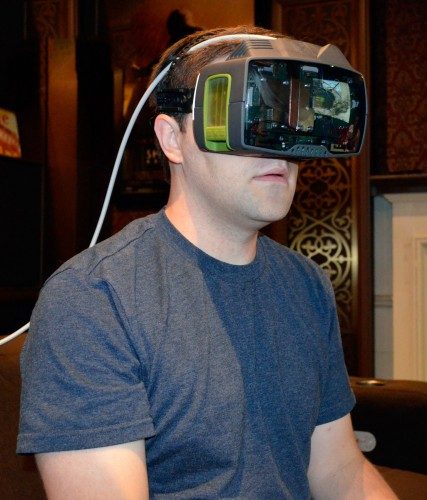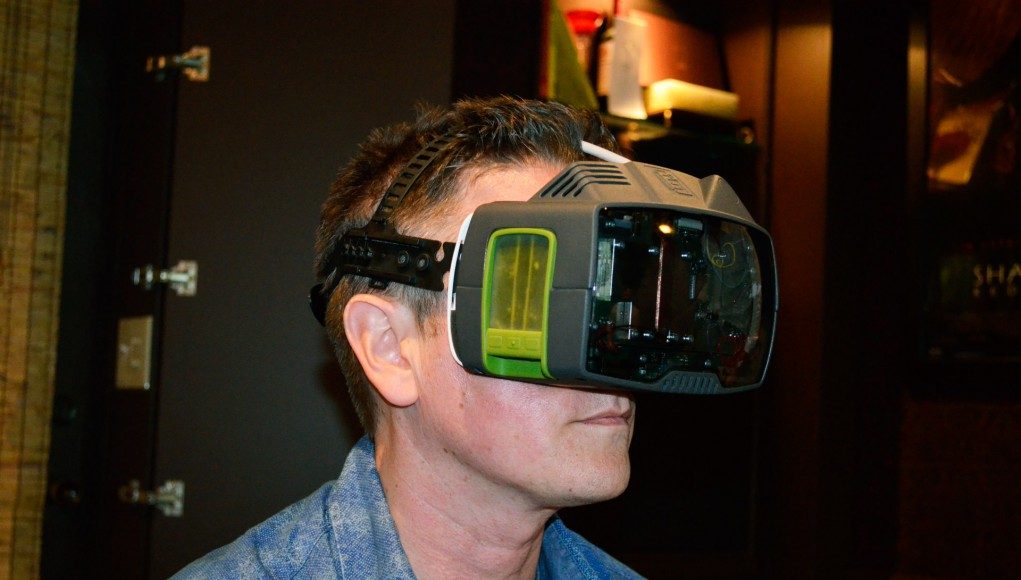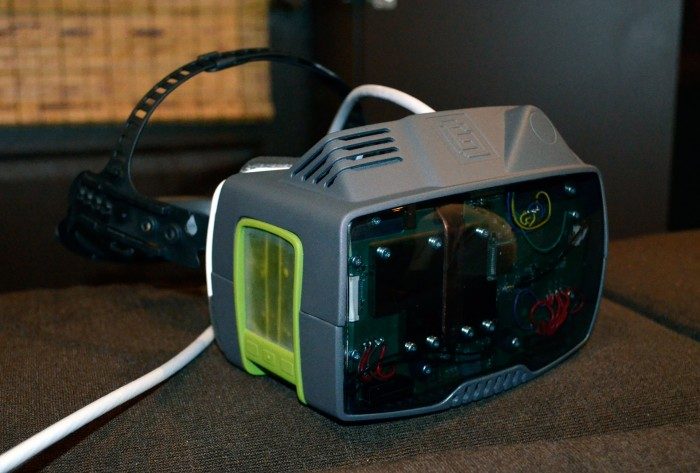We recently got our hands on the latest ‘Mark 6’ mobile VR headset prototype from GameFace Labs. The ‘Head Mounted Console’ as the company calls it, features a 2560×1440 OLED display and an on-board processor, making the device a self-contained mobile VR headset with a notably wider field of view than Samsung’s Gear VR. The company says their headset will be on par—or better—than Gear VR’s superb headtracking latency.
While Gear VR impresses in many ways, one of the first things I noticed when putting on the GameFace Labs‘ Mark 6 prototype was how much wider the field of view is than Samsung’s mobile VR headset. Gear VR immerses, but has always appeared to show more of a binocular-like silhouette around the periphery of the field of view compared to headsets like the Rift DK2, and especially compared to the latest generation like the Rift CV1, HTC Vive, and 2015 Morpheus prototype.
 So it was refreshing when I put on the Mark 6 and found that its field of view felt somewhere between the DK2 and those latest headsets. Rather than feeling like I was constricted by a binocular silhouette, the view inside the Mark 6 opened up around me. I also quickly noticed how vibrant the colors on the 2560×1440 display were, along with the rich blacks that OLED is known for. I saw the headset running at 60Hz, but GameFace CEO Ed Mason tells me that—as of our viewing— the company now has the unit running at 75Hz.
So it was refreshing when I put on the Mark 6 and found that its field of view felt somewhere between the DK2 and those latest headsets. Rather than feeling like I was constricted by a binocular silhouette, the view inside the Mark 6 opened up around me. I also quickly noticed how vibrant the colors on the 2560×1440 display were, along with the rich blacks that OLED is known for. I saw the headset running at 60Hz, but GameFace CEO Ed Mason tells me that—as of our viewing— the company now has the unit running at 75Hz.
The display was suitably sharp and the screen-door effect not too noticeable. Although the panel is OLED, the Mark 6 doesn’t yet have low-persistence (a display technique that’s important for reducing motion blur), but Mason says that it will be ready by the time the company’s development kit ships.
GameFace Labs announced recently plans for the headset to feature Valve’s Lighthouse positional tracking tech and also be functional as a tethered headset, receiving high quality visuals from a powerful computer rather than the device’s onboard processor, making it a hybrid of sorts. The Mark 6 prototype doesn’t have these features built-in yet, but we’re definitely looking forward to testing them out.
See Also: GameFace Mobile VR Headset Will Also Tether to PCs Through Valve’s OpenVR
The Mark 6 packs quite a bit of performance. The Nvidia Tegra K1 SoC makes the unit a complete standalone device, which is why GameFace is privy to the term ‘head mounted console’. The company says an on-board fan allows them to push the 2.3GHz CPU beyond the processing capabilities of the Note 4 (the phone that powers Gear VR). I was shown the device running a Cardboard app that the unit was able to push at a higher framerate than the Note 4, resulting in smoother gameplay when running stock Android VR apps.
When it comes to made-for-Gear VR titles though, Gear VR has the Mark 6 beat on head tracking latency and accuracy by a fair margin, thanks largely to crucial work done by Oculus to subvert Android and give Gear VR apps uniquely fast access to low-level hardware. When I asked if GameFace would be able to match the latency of Gear VR by the developer release of their mobile VR headset, Mason said “I can guarantee it,” and suggested that they may be able to achieve even lower latency, something that we look forward to seeing for ourselves.
Despite looking fairly bulky, the Mark 6 didn’t feel unreasonably heavy compared to other headsets. And although the headstrap looks somewhat flimsy, its ratcheting mechanism allowed a quick and comfortable adjustment around the head. The right side of the unit features a touchpad and a few buttons for various functions including a side-by-side view which can make any non-VR part of Android (like the home screen) viewable on the headset by duplicating the image and creating a monoscopic pair to be seen through the lenses.
There’s more to come from GameFace as the company continues to refine their development kit; we’re already looking forward to our next encounter with this ambitious device.








